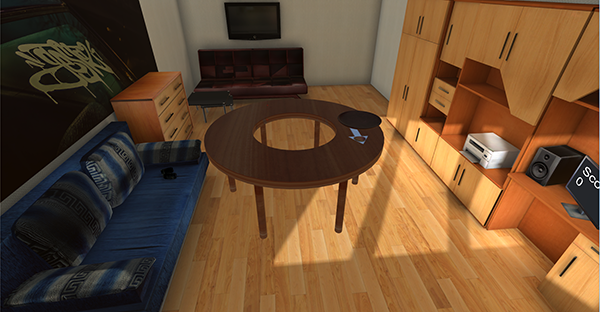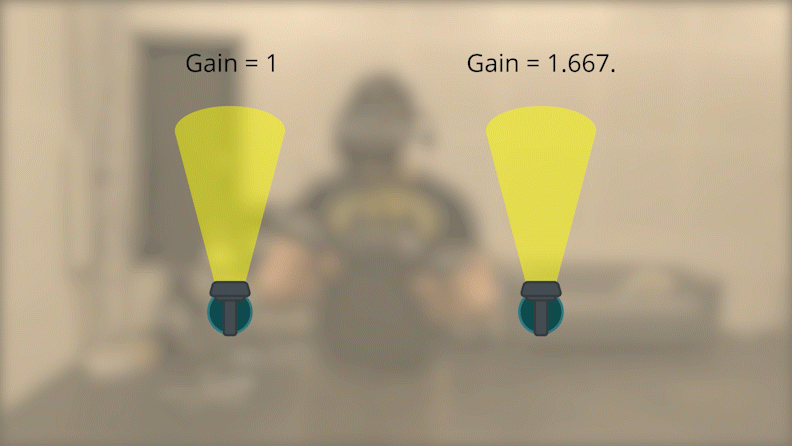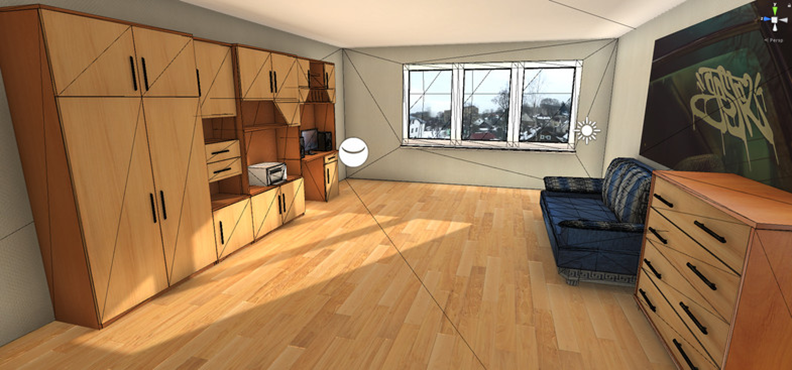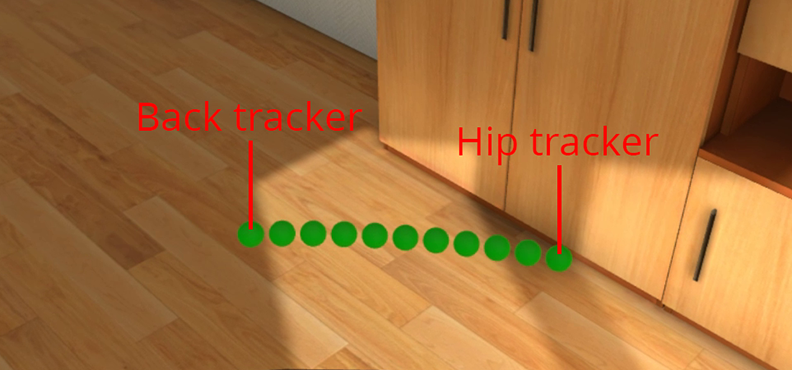Project page
Treating Chronic Low-Back Pain in Virtual Reality
Formal title:
Measuring the Effect of Control-Display Gain and Virtual Body Representation in Range of Motion Exercises
Semester:
7th
Year:
2018
My roles:
Research, Writing, Game Design, User testing, Data Analysis, Evaluation
Overview
With this project we aimed to create a solution for the penomenon called catastrophizing, which refers to patients who experience chronic pain avoiding certain movements or ranges of motion out of fear that it would lead to pain. We tackled this problem by modifying control-display (CD) gain in virtual reality. Another condition was testing whether adding an avatar would have an impact on user performance.
This involves tricking the user by making them perform a greater range of motion that they normally would avoid out of fear. By increasing the gain, users would experience a turn with a greater degree than they actually performed, and by decreasing it, they would be turning further than they percieve. Patients with chronic pain would stop motion even before it begins to hurt, and this hinders their recovery. By tricking them in this manner, it actually helps them in the healing process.

The users were required to sort fruits (apples and oranges) into baskets on a cicular table surrounding them. The fruits spawned directly in front of them, and they were awarded points based on how far they have placed the fruit on the table. This was meant to encourage a greater range of motion. You might wonder how true to life the premise of sorting a metric ton of fruit in one's living room is. Well, users just have to imagine they were the person from those math problems we all had.
This was the first project I did in the Master's programme. Up until this point, we were writing project reports accompanied by portfolios, but from this point on we were required to write scientific articles. Although we always strived to work with our intended target users during the design process, this was the first time we worked together with experts in the field. If you’d like to read the submitted paper click here, and for the worksheets click here.

My tasks
Research and Writing
This was the semester in which I took that specialized course on scientific writing and research, so all this was quite new to me. Whatever is produced during that course made its way into the final hand-in of the project. That course was not mandatory, and only a handful of us chose to do it, and I am glad I deicded to take that one, because it provided me with skills that I could use in other contexts as well. We were introduced to state-of-the-art tables and the concept of synthesizing, which means extracting the relevant knowledge from the important studies and finding common ground between them.
Game Design
The game design was centered around the user rotating their spine. This is why they are centered in a circular table. To be able to visualize the amount of rotation they performed, we spawned green balls in an arc around the table. The game calculated the difference between the tracker on their hip and their back to see the difference in degrees. We did not implement a timer as to avoid the users potentially rushing their movements, which could have had a negative impact on their condition. While the scores the players gained are somewhat arbitrary, this was only a prototype.
User Testing
In this project, we performed two different rounds of testing. The first one was a simple one to determine the CD gain levels at which the participants notice the discrepancy between their movements and what they perceived in VR, and the second one to see if we could achieve greater rotation in the participants by manipulating the CD gain and adding an avatar as body representation.
Data anaylsis and evaluation
We all took part in analysing and evaluating our findings. We used rStudio and Microsoft Excel, in this process. Our combined knowledge in this area made sure we selected the correct statistical tests.
Reflection
This project was a good first venture into writing scientific articles, and we gained a lot of new experience by consulting with experts in the field. While the game could use some polishing on progression and rewards, this was more of a therapeutic tool than a game. The game was added to make the therapy sessions more interesting to the patients. Looking at the project as a whole, it is neither outstanding nor underwhelming, but it served as an excellent foundation for the next two projects I did during my Master's studies. We learned new skills and adapted a new way of looking for sources and documenting our findings.

